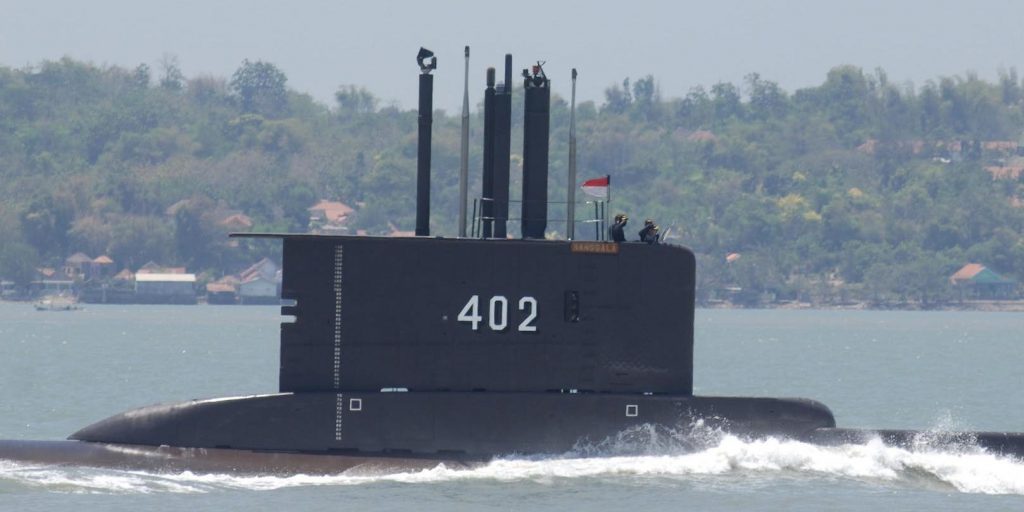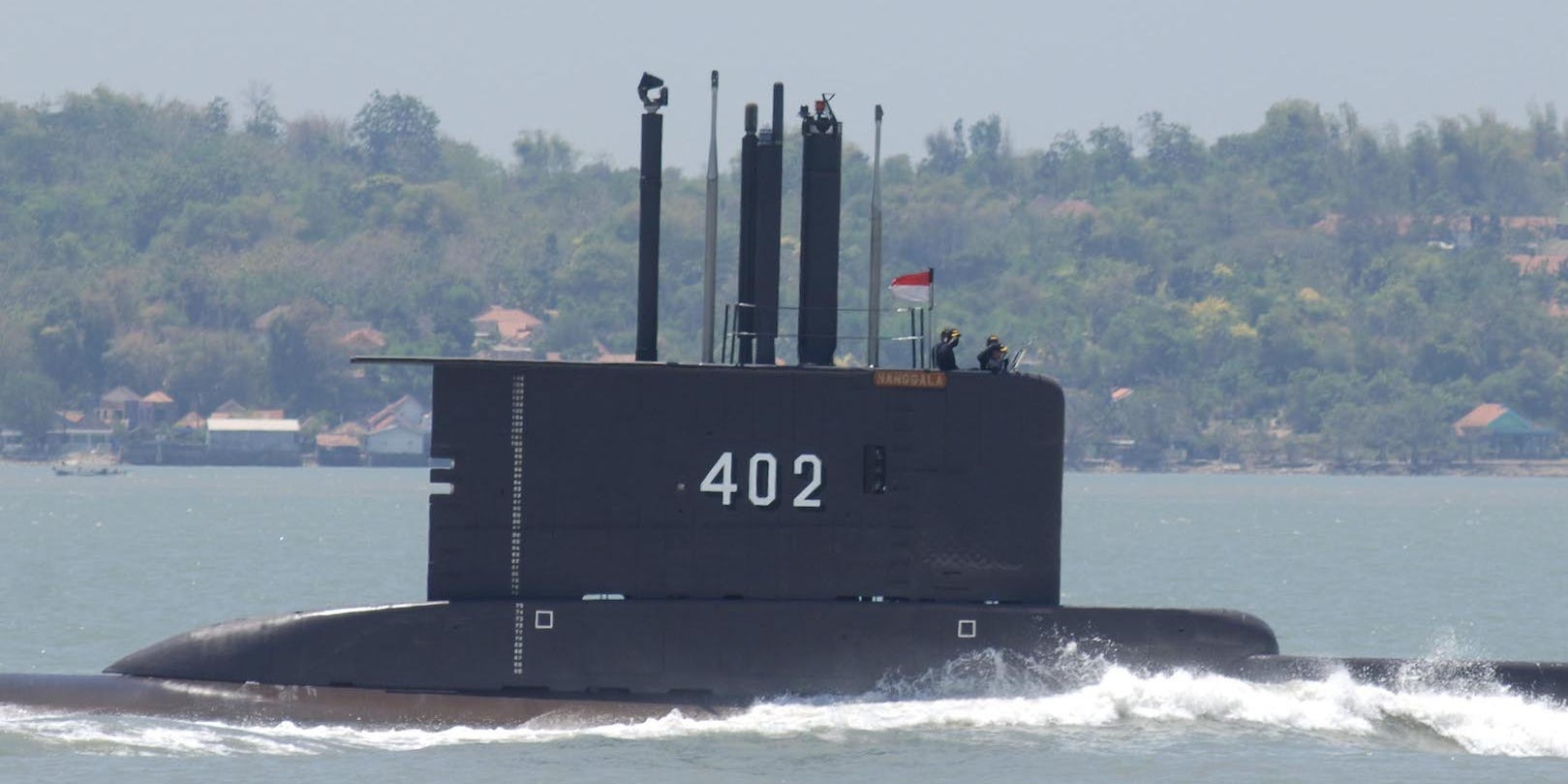
Alex Widojo/Anadolu Agency/Getty Images
- The loss of the Indonesian submarine KRI Nanggala in April showed the perils of undersea warfare.
- It's not the first time; in 1968, four submarines were lost in five months.
- The causes of those wrecks remain unknown a half-century later.
- See more stories on Insider's business page.
In April, after an extensive five-day search, the wreckage of the Indonesian submarine KRI Nanggala was found 2,750 feet underwater in the Bali Sea.
The submarine had broken into three pieces, tragically confirming that all 53 crew members had perished.
The exact cause of the sinking remains unknown. Indonesian officials have ruled out human error and have suggested a power failure or undersea wave may have forced the submarine to descend far below its crush depth of about 655 feet. The government plans to recover the submarine with help from China.
Deep-water submarine sinkings are rare but always fatal, and their causes are hardly ever fully established.
In 1968, for instance, four submarines from four countries were lost with all hands in a five-month period. Over 50 years later, their causes remain unknown.
INS Dakar
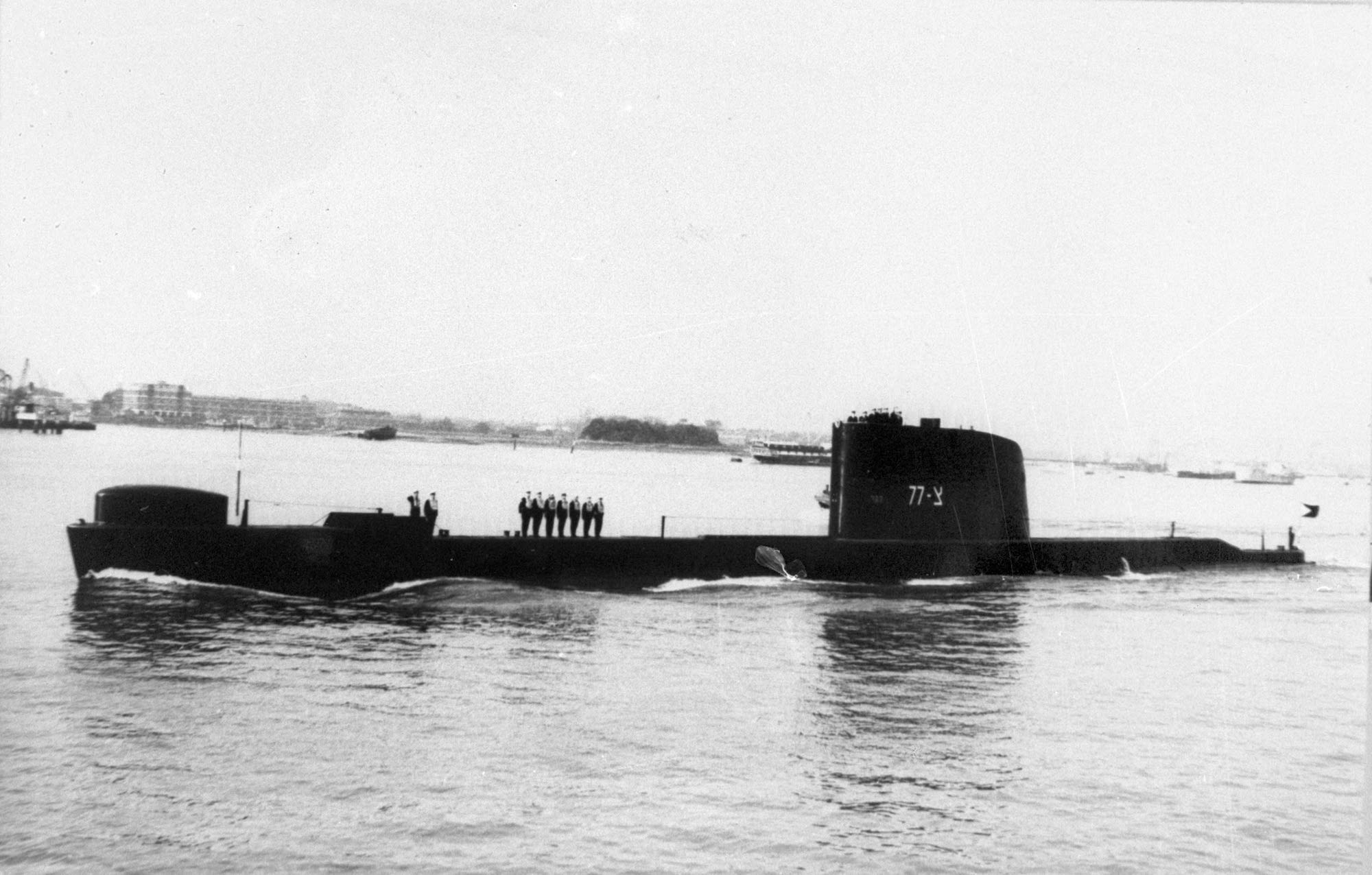
Israel Defense Forces
INS Dakar was an Israeli T-class submarine that was launched in 1943 and served in the British navy as HMS Totem before being purchased by Israel in 1965.
After completing sea and diving trials in Scotland, Dakar was scheduled to arrive to a welcoming ceremony in Israel on January 29, 1968. The sub arrived in Gibraltar on January 15, reported its location as just east of Crete on January 24, and sent its final message shortly after midnight on January 25.
When it was clear the sub was missing, ships from Britain, Greece, Turkey, Lebanon, and Israel searched the area for days, though the effort was complicated by tensions in the region.
Finding nothing, the search officially ended February 4, but the 69-man crew was not officially declared dead until 1981. In 1991, the wreck was finally discovered between Crete and Cyprus some 9,800 feet underwater.
The cause of Dakar's sinking has never been determined. The Israelis initially believed the Soviets might have been responsible but have since ruled out hostile action. Because Dakar was not carrying torpedoes and the wreck was mostly intact, an internal explosion is also unlikely.
The prevailing theories are that mechanical or human error caused a catastrophic accident or that the submarine's snorkel was damaged after hitting another ship in a storm, causing it to flood.
Minerve
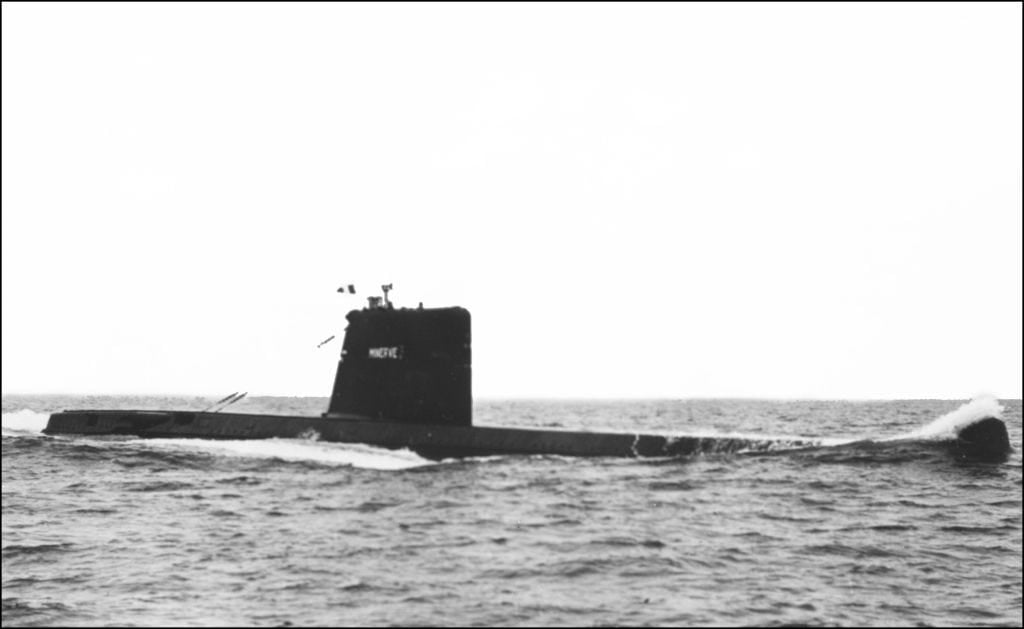
STF / AFP via Getty Images
Minerve was a French navy Daphné-class submarine launched in 1961. Based in Toulon, it had a crew of 52.
On January 27, 1968, Minerve was caught in bad weather as it returned to Toulon from a training operation in the Mediterranean.
When it was about 30 miles south of the French coast, Minerve made contact with French aircraft and said it would be in port in about an hour.
But Minerve never arrived. A frantic search was conducted with 20 vessels and aircraft, including the aircraft carrier Clemenceau, but it was called off on February 2. Multiple searches in the following years also failed to find the submarine.
Minerve would remain missing until 2019, when it was found by the American ocean-mapping company Ocean Infinity as part of a French government-sponsored effort to find the submarine.
It was located about 28 miles off Toulon in about 7,800 feet of water. The sub was in three pieces scattered over a 984-foot area. The French government decided to not raise the sub, which means the cause of the sinking will probably never be known.
K-129
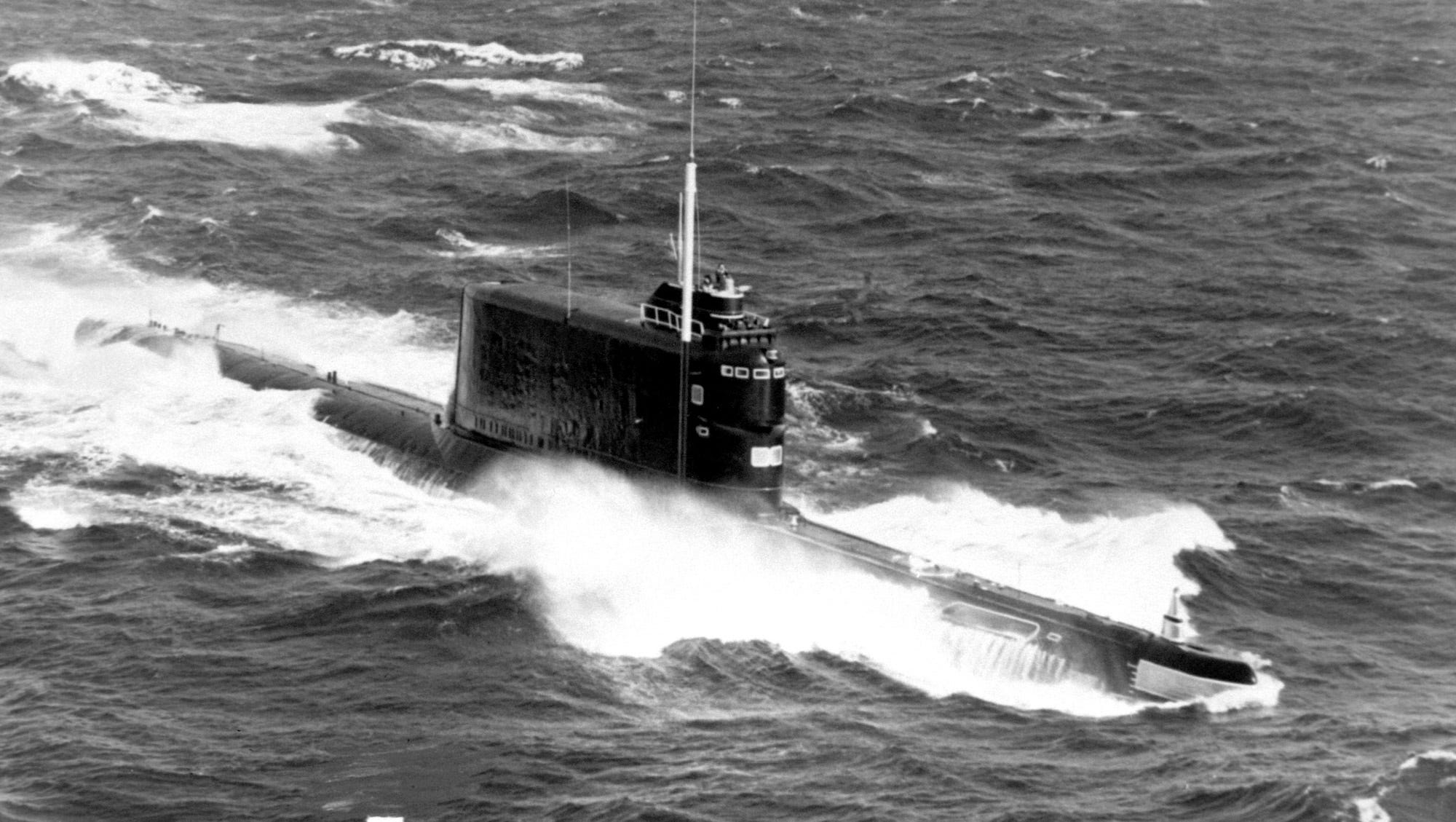
US Defense Department
K-129 was a Soviet Golf II-class diesel-electric ballistic-missile submarine launched in 1959. Part of the Soviet Pacific Fleet, it had a crew of 98 and carried three SS-N-5 submarine-launched ballistic missiles - the first Soviet SLBM that could be fired from a submerged sub.
On March 8, 1968, almost two weeks into a patrol in the North Pacific, K-129 failed to send a scheduled radio message. The Soviets soon began a frantic search with 36 vessels and dozens of aircraft, which flew 286 flights over the search area.
After two months and no sign of K-129, the Soviets gave up. The US Navy, however, didn't.
Intrigued by the massive search effort, the Americans knew something valuable had been lost, and thanks to the Navy's underwater listening devices, they managed to find K-129's wreck on August 20.
The wreck, located some 1,500 miles northwest of Hawaii, was over 16,500 feet below the surface. The CIA, eager to obtain Soviet codebooks, SS-N-5 missiles, and nuclear torpedoes, created a plan, called Project Azorian, to recover the sub.
The CIA persuaded the eccentric billionaire Howard Hughes to use his deep-sea mining company, Global Marine Inc., as a front for a CIA-funded vessel specifically designed to recover the K-129 and bring it to the US.
In 1974, the ship, Hughes Glomar Explorer, successfully recovered one-third of the K-129. Apart from six bodies (which were buried at sea) the CIA has never publicly disclosed what it recovered, though it is believed to have obtained two nuclear torpedoes and other intelligence items.
The cause of K-129's sinking has never been established, and because of the secrecy of Project Azorian and its effect on the wreckage, it will most likely never be known.
USS Scorpion
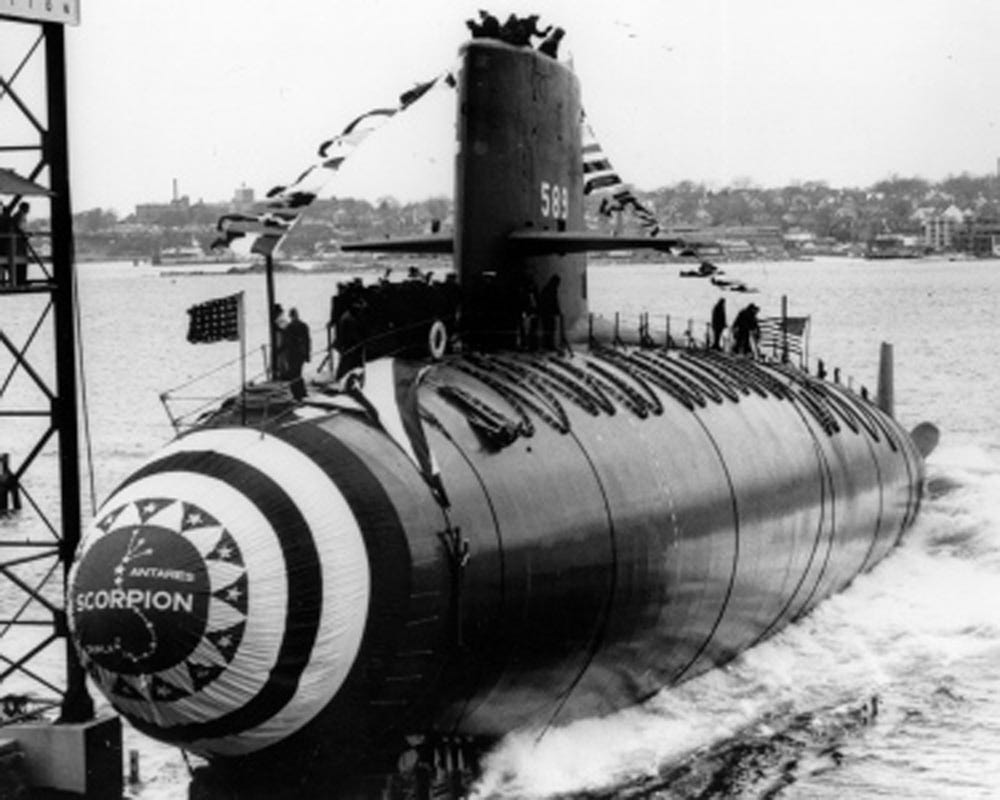
US Navy
Almost three months after K-129 sank, USS Scorpion, a Skipjack-class nuclear-powered attack submarine with a crew of 99, went missing in the Atlantic while returning from a patrol in the Mediterranean.
Launched in 1959, Scorpion had a reputation for mechanical troubles - so much so its crew called it "USS Scrapiron." It received a hasty refit in 1967 and set out for a Mediterranean patrol on February 15, 1968.
Toward the end of its patrol, Scorpion was ordered to observe Soviet naval activity off the Canary Islands. On May 21, it radioed that it was some 50 miles south of the Azores and expected to return to Norfolk on May 27.
Scorpion never arrived. A massive search effort was launched with dozens of ships, submarines, and aircraft on both sides of the Atlantic, but on June 5, Scorpion and its crew were declared "presumed lost."
The search continued, and on October 29, the wreck was found roughly 400 miles southwest of the Azores under 10,000 feet of water.
The sub had broken into three pieces: The sail had been ripped off; the bow had separated from the operations compartment, which was obliterated; and the engine room had crumpled into the hull like a telescope.
The Navy never determined what caused Scorpion's sinking. The intact bow meant its torpedoes hadn't detonated, but multiple hatches on the sub's hull were open, and the batteries on the Scorpion's Mark 37 torpedoes were later known to have defects.
The most likely theories are that Scorpion sank after a torpedo had accidentally been armed (known as a "hot run") and detonated inside or outside the sub, that the trash-disposal unit had malfunctioned and caused flooding that triggered an explosion when it reached the batteries, or that a hydrogen explosion was caused by gases trapped during or after the charging of the batteries.
The lack of a definitive answer has also led to conspiracy theories, including that the Soviet Navy sank the submarine in retaliation for the loss of the K-129. (Some Soviet Navy officials believed K-129 sank because of a collision with the USS Swordfish, a US submarine operating in the Pacific at the same time.)
Scorpion is one of two nuclear-powered submarines the US Navy has lost. The other, USS Thresher, sank off the coast of Massachusetts in 1963.
